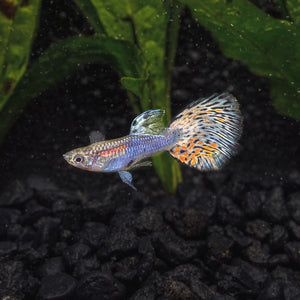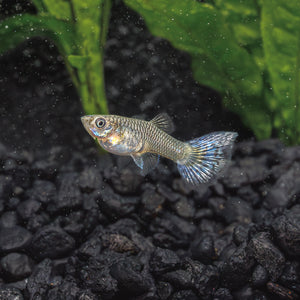Your Cart is Empty
🚚 Flat-Rate FedEx Priority Overnight — Just $26.99 (Limited-Time Special!) | FREE over $200


What we feed Guppies
We feed our fish a mix of frozen, live, and prepared foods including live baby brine and black worms. We also supplement their diet with a mix of Northfin Veggie, Community, and Bug Pro.
Here are some common questions a hobbyist might ask about Japan Blue Guppies, along with answers:
A tank size of at least 10 gallons is recommended for a small group of guppies. This provides enough swimming space and helps maintain stable water parameters. If you plan to breed them or keep a larger group, a bigger tank is ideal to accommodate their activity and offspring.
Guppies are omnivorous and thrive on a varied diet. High-quality flake food should form the base of their diet, supplemented with live or frozen foods like brine shrimp, daphnia, and bloodworms. Vegetables such as blanched spinach or zucchini can also be added for variety.
Males are smaller and more colorful, with elongated and patterned caudal fins. Females are larger, have rounder bodies, and their fins are less vibrant. Observing these traits makes it easy to identify their gender.
Yes, they are peaceful and do well in community tanks with other non-aggressive fish of similar size, such as tetras, rasboras, and small catfish. Avoid keeping them with fin-nippers or large predatory fish.
Guppies are prolific breeders, and females can give birth to fry every 4–6 weeks. If you want to manage the population, consider keeping only one gender or introducing fish like shrimp that might consume some of the fry.
Yes, they are hardy and adaptable, making them an excellent choice for new aquarists. Their care requirements are straightforward, and their active, colorful behavior is very rewarding for beginners.
A dark substrate and background can help enhance their blue coloration. Providing a balanced diet with color-enhancing foods, such as those rich in carotenoids, can also bring out their natural vibrancy.